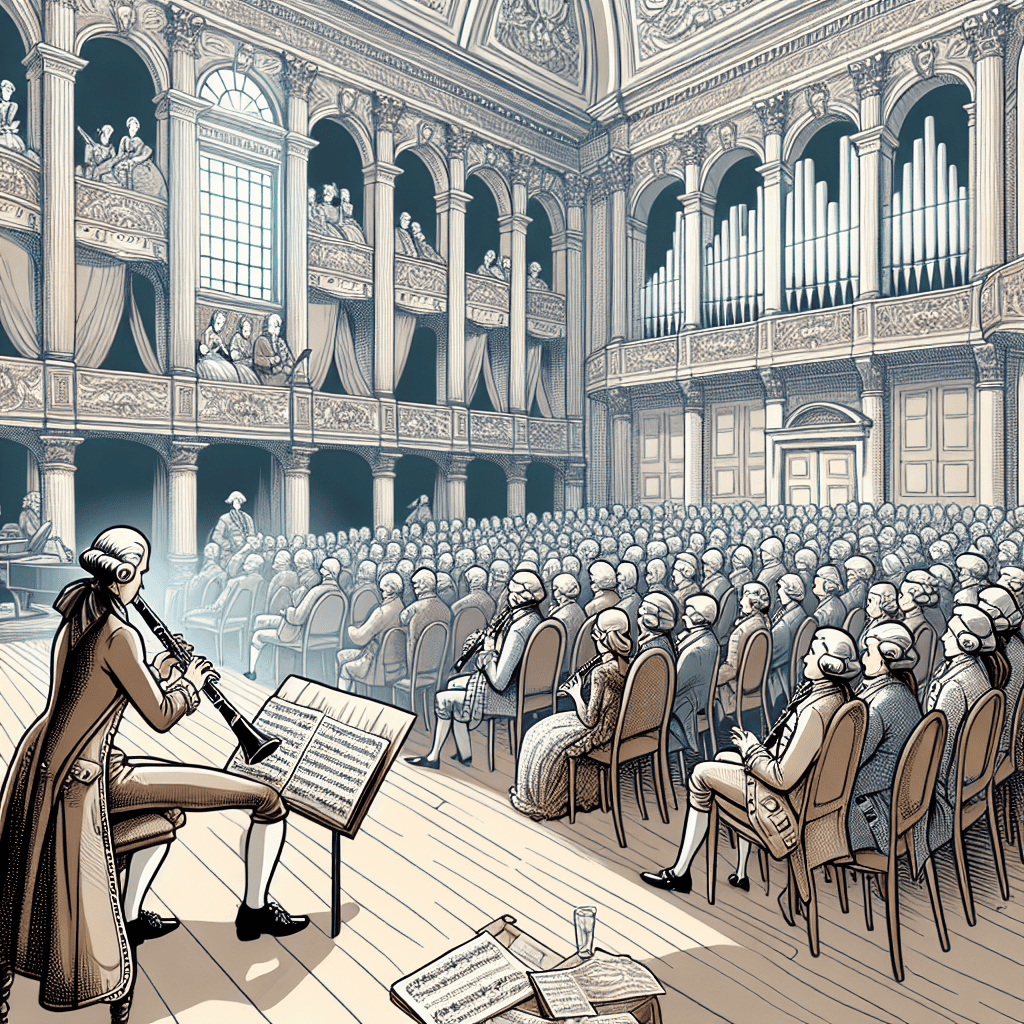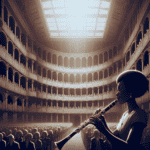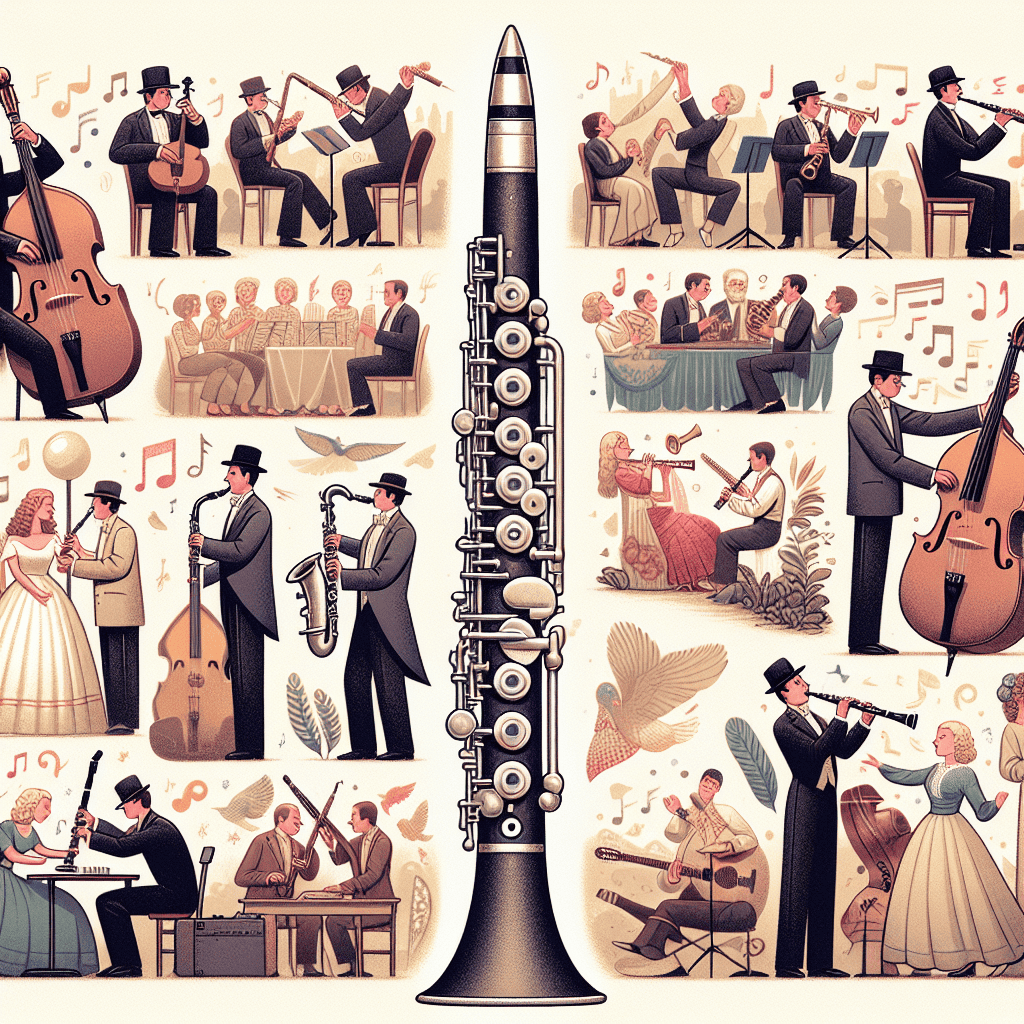Curious about Romantic period clarinet music? You've come to the right place! Romantic music, with its emotional depth and expressive melodies, offers a rich playground for clarinetists.
During the Romantic period, spanning roughly from 1820 to 1900, the clarinet truly shone. Composers aimed to express intense emotions and grand narratives, and the clarinet, with its wide dynamic range and soulful tone, was the perfect instrument for this task.
Key Composers and Pieces
Several composers left their mark on Romantic period clarinet music. Carl Maria von Weber, for example, wrote pieces that remain beloved today. His Clarinet Concerto No. 1 and Concerto No. 2 are cornerstones of the clarinet repertoire, featuring challenging passages that push players to their limits.
Johannes Brahms also made significant contributions. His Clarinet Quintet in B minor, Op. 115 and Clarinet Sonatas, Op. 120, No. 1 and No. 2 embody the essence of Romanticism with their lyrical and intricate melodies.
Camille Saint-Saëns is another notable composer, known for his Clarinet Sonata, Op. 167, which remains popular due to its charming and lively character.
| Composer | Notable Works |
|---|---|
| Carl Maria von Weber | Clarinet Concerto No. 1, Clarinet Concerto No. 2 |
| Johannes Brahms | Clarinet Quintet in B minor, Op. 115, Clarinet Sonatas, Op. 120, No. 1 and No. 2 |
| Camille Saint-Saëns | Clarinet Sonata, Op. 167 |
Performance Techniques
Playing Romantic period clarinet music calls for specific techniques. Dynamic control is key, as the music often requires dramatic shifts from very soft (piano) to very loud (forte). Mastering this range enhances the emotional impact of the pieces.
Rubato is another important technique, where the player elongates certain notes and shortens others, adding a sense of freedom and expressiveness to the performance. While challenging, this technique is vital for capturing the Romantic spirit.
A warm, rich tone is also crucial. Focus on breath control and embouchure stability to create a consistently beautiful sound. Your choice of instrument and reeds will affect this, so experiment with different setups to find your ideal sound.
Companies like Martin Freres understand the needs of clarinetists playing Romantic music. Their clarinets are crafted to provide excellent response and a resonant tone, helping players express the subtle emotions characteristic of this era.
The Role of the Clarinet in the Romantic Era
The clarinet's role grew significantly during the Romantic period. It became a leading voice in orchestral music and gained importance in smaller ensembles and solo performances. Composers appreciated the instrument's ability to convey a wide range of emotions, from tender and melancholic to fiery and exuberant. This versatility made it essential in the Romantic music landscape.
Clarinets of the Romantic era also saw innovations and improvements in design. Changes in key mechanisms and bore dimensions allowed for more agile and expressive playing. Today's modern clarinets, such as those from Martin Freres, build on these historical advancements, offering improved intonation and ease of play.
Tips for Mastering Romantic Period Clarinet Music
- Listen and Learn: Study recordings of renowned clarinetists performing Romantic pieces. Pay attention to their phrasing, dynamics, and use of rubato. This will help you grasp stylistic norms and inspire your own interpretations.
- Practice Phrasing: Romantic music is known for its long, flowing phrases. Work on connecting notes smoothly to create seamless lines. Avoid choppiness and aim for a legato style that flows from one note to the next.
- Embrace Emotion: Don't hesitate to put your heart into your playing. Romantic music thrives on emotional delivery. Let your feelings guide your performance, whether it's joy, sorrow, or passion.
- Refine Technique: While expression is important, don't overlook technical precision. Ensure your fingerings are fluid and your articulation is clean. Practice difficult passages slowly before gradually increasing your speed.
- Instrument Maintenance: Keep your clarinet in excellent condition. Regular cleaning and timely repairs will prevent technical issues from affecting your performance. Martin Freres clarinets, known for their reliability and craftsmanship, can be a valuable companion in your musical journey.
Conclusion
Exploring Romantic period clarinet music can be incredibly rewarding. The emotional power of pieces from this era, combined with the expressive capabilities of the clarinet, creates something truly special. By understanding the historical context, honing performance techniques, and using a quality instrument, you can bring the captivating stories of the Romantic era to life.







